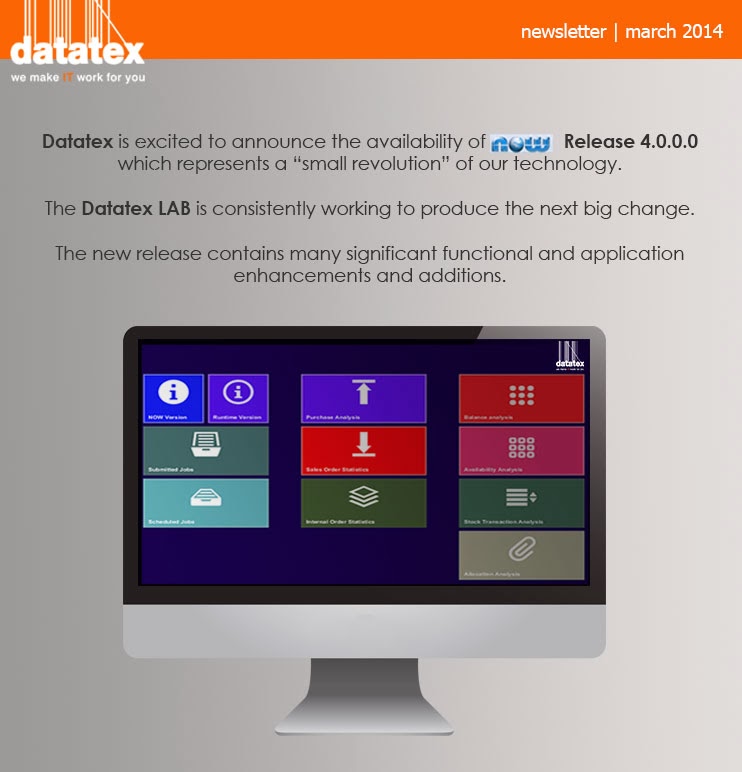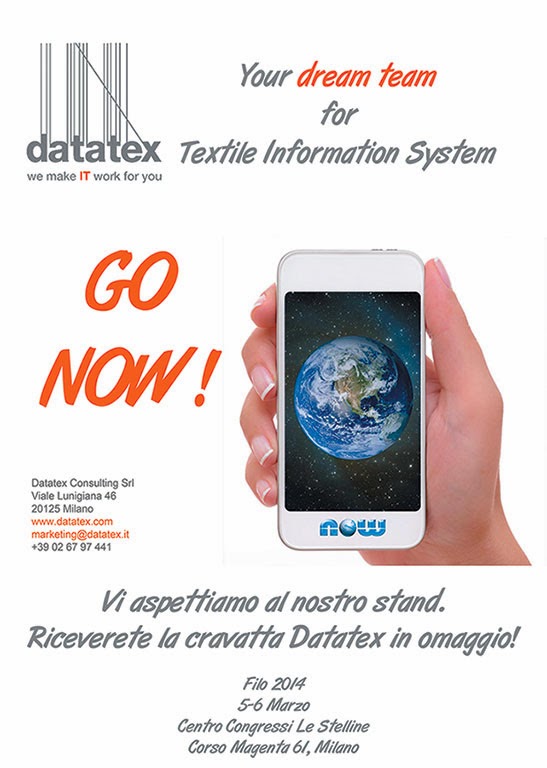DATATEX ROADSHOW: Incontri per migliorare l'efficienza aziendale
DATATEX ROADSHOW: Incontri per migliorare l'efficienza aziendale CLOUD : Quando conviene Vantaggi e svantaggi del Cloud La proposta NOW Cloud: - PAY PER USE - QUICK TO START - EASY TO USE LE WEB APPLICATION : CRM: rapporto costi/benefici Gli opensource e i portali Il commercio elettronico Il sales order via Web COSTI DI PRODOTTO : Un modello flessibile e personalizzabile per il calcolo e controllo di tutte le componenti di costo PDM: Progettazione e sviluppo delle campionature e dei nuovi prodotti PIANFICAZIONE DELLA PRODUZIONE : migliorare l'efficienza della produzione in presenza di: - domanda variabile - tempi e date di consegna stretti - lotti ridotti Scegli una data e iscriviti! Scegli tra una delle seguenti date, clicca e iscriviti! La part...


